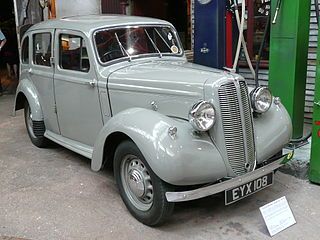Using Renewable Energy to Address the Destruction of the Natural Environment

If it’s primitive, with an emphasis on pragmatism and a minimum of attention on design, it was probably made before the mid-1920s.
If it’s so gorgeous and artistic that its style takes your breath away, it was probably made in the late 1920s or 1930s (see 1938 Hillman in photo).
If it looks newer, but all the style is mysteriously missing (especially if it has weird little windows), it was probably made in the 1940s.
The nearly instantaneous evaporation of auto styling in the early 1940s was likely a function of the onset of World War II, and the focus on the struggle to save humanity from Hitler. One can appreciate a lack of interest in frivolity at such a time.
In the estimation of many, humankind faces an equally lethal menace here in the 21st Century, in the form of the destruction of the natural environment. Though this time it’s a bit more subtle, in that it’s happening over a longer period of time, and it’s not captained by a single madman. Many have also suggested that we need a response to this challenge not unlike the shoulder-to-shoulder effort we assembled to win World War II.
I support this 100%–with only the following proviso: this time, let’s not lose the sense of style and art. There’s really no need to. For example, note that we’ll be eliminating coal plants—no aesthetic loss there—in either the physical buildings themselves or the gray-brown effluent belching forth from them.
